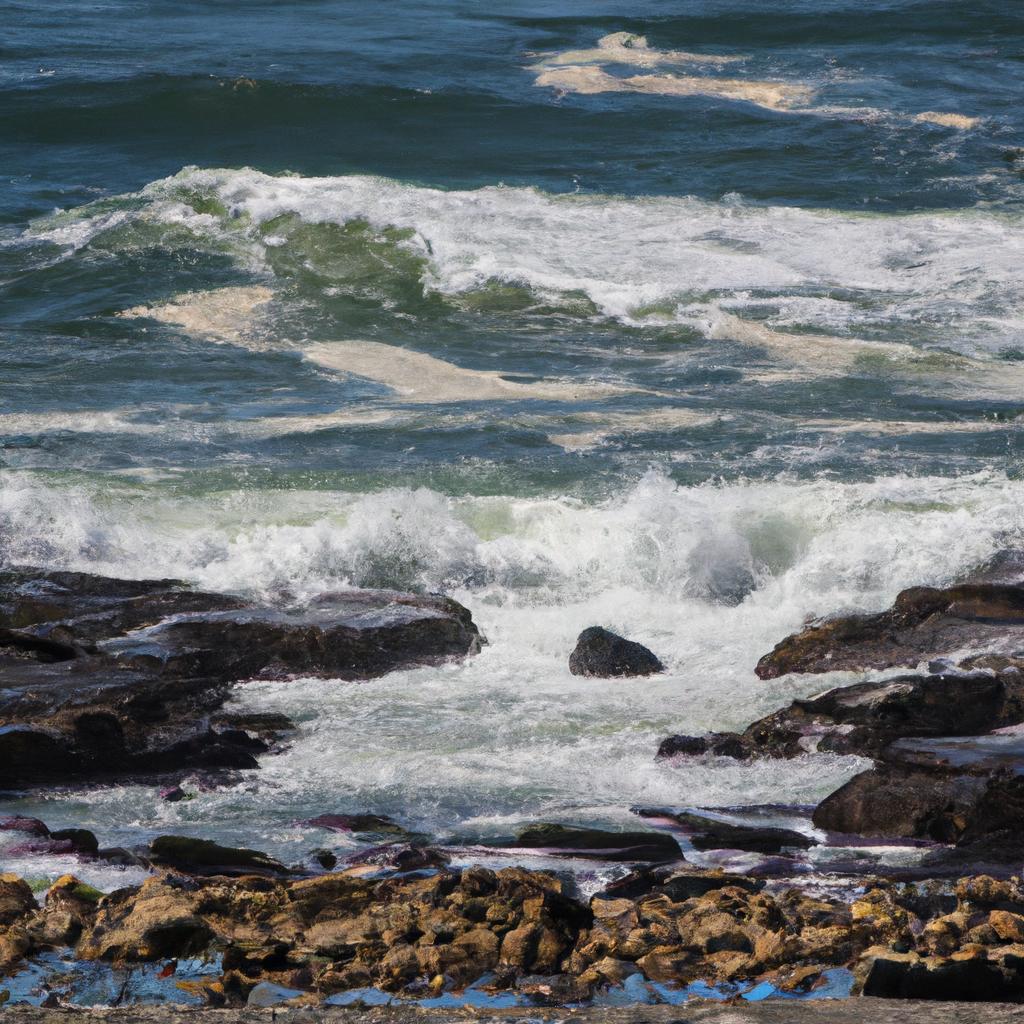Are you a nature enthusiast seeking your next thrilling adventure? Look no further than the geological wonders of Nova Scotia. With its towering cliffs and ancient fossils, this province proudly displays a diverse and captivating geological landscape that is sure to captivate visitors of all ages.
Nova Scotia is a haven for various rock formations, including igneous, sedimentary, and metamorphic rocks. These formations serve as a testament to the province’s rich geological history spanning over an impressive 500 million years. By studying these rocks, geologists gain valuable insight into the Earth’s past and form a deeper understanding of our present world.
The Geology of Nova Scotia
Nova Scotia’s geological history is an intricate and captivating tale that spans over half a billion years. The province’s geological formations are the result of diverse processes such as volcanic activity, sedimentation, and glacial erosion.
Geological History of Nova Scotia
Nova Scotia’s geological journey dates back to the Precambrian Era, over 4 billion years ago, when the province was part of the supercontinent Rodinia. Throughout eons, Rodinia gradually broke apart, eventually shaping the North America we know today.
Following the Paleozoic Era, which began around 541 million years ago, Nova Scotia was submerged beneath a shallow sea. This sea teemed with diverse marine life, including trilobites and brachiopods. As sediment accumulated on the ocean floor, it eventually solidified into sedimentary rocks like sandstone and shale.
During the Mesozoic Era, approximately 252 million years ago, Nova Scotia experienced volcanic activity, leading to the formation of igneous rocks such as basalt and granite.
Types of Rock Formations Found in the Province
Nova Scotia proudly hosts various rock formations, including sedimentary, igneous, and metamorphic rocks. These rocks can be found throughout the province, from the rocky shores of the Atlantic coast to the rolling hills of the Annapolis Valley.
Sedimentary rocks like sandstone and shale are plentiful in Nova Scotia and can be found in numerous areas. Granite and basalt, examples of igneous rocks, are also present, particularly in Cape Breton Island. While less common, metamorphic rocks like slate and marble can still be discovered in certain parts of the province.
Impact of Glaciation on Nova Scotia’s Landscape
Approximately 12,000 years ago, the last ice age enveloped much of Nova Scotia in glaciers. These mighty glaciers significantly shaped the province’s landscape, carving out valleys and creating the lakes and rivers that grace the region today. Additionally, the glaciers left behind vast sediment deposits, which formed the fertile soil essential to Nova Scotia’s thriving agricultural industry.
Famous Rock Formations in Nova Scotia
Nova Scotia is home to some of the world’s most astounding rock formations. From majestic cliffs to gravity-defying balancing rocks, these formations are must-see attractions for anyone visiting the province. Let’s dive into some of the most renowned rock formations in Nova Scotia:
Peggy’s Cove
Situated a mere 43 kilometers southwest of Halifax, Peggy’s Cove stands as one of Nova Scotia’s most iconic and photographed spots. This charming locale features a lighthouse perched atop a colossal granite outcrop shaped by the relentless forces of the Atlantic Ocean. Visitors can explore the rugged coastline while marveling at the unique rock formations.
Cape Split
Cape Split, a narrow peninsula extending into the Bay of Fundy, treats visitors to awe-inspiring views of the surrounding landscape. The hike to Cape Split is a beloved activity for both locals and tourists, leading adventurers through dense forests, rocky terrain, and scenic coastlines. The distinctive rock formations found at Cape Split serve as a testament to the incredible power of the Bay of Fundy tides.
Five Islands Provincial Park
Nestled on the north shore of Nova Scotia, Five Islands Provincial Park proudly showcases some of the province’s most breathtaking rock formations. Towering cliffs, reaching up to 120 meters above the Bay of Fundy, offer a sight to behold. Visitors can explore the beach, hike the trails, and even embark on fossil-hunting expeditions.
Balancing Rock
Sitting on Long Island, Balancing Rock stands as a natural wonder that has captivated visitors for centuries. This colossal granite boulder seemingly defies gravity as it precariously balances on a narrow pedestal. The enchanting rock formation serves as a testament to the erosive power of the Atlantic Ocean.
Blue Rocks
The quaint fishing village of Blue Rocks, just outside Lunenburg, is home to some of Nova Scotia’s most picturesque rock formations. The distinctive blue-grey granite rocks that line the coast have been artistically shaped by the relentless forces of the ocean, creating a stunning landscape sure to leave visitors in awe.
These are just a few of the many famed rock formations awaiting exploration in Nova Scotia. Each offers a unique glimpse into the province’s geological history and natural beauty.
Fossil Hunting in Nova Scotia
Ever wished to journey back in time and explore the prehistoric world? Nova Scotia’s rich fossil record allows a captivating glimpse into the province’s geological history.
Fossils are the preserved remains of ancient plants and animals found within rocks, offering scientists a window into Earth’s evolution and its remarkable transformations over millions of years.
Importance of Fossils in Understanding Geological History
Fossils serve as invaluable tools for comprehending Nova Scotia’s geological history. They provide evidence of past environments, including the types of plants and animals that once thrived, as well as insights into the region’s climate and geography. By examining fossils discovered in various rock formations, geologists can reconstruct Earth’s history and gain profound insights into its gradual metamorphosis.
Popular Fossil Hunting Sites in Nova Scotia
Nova Scotia entices fossil enthusiasts with a plethora of hunting sites, each offering a unique glimpse into the province’s prehistoric past. Blue Beach, Joggins Fossil Cliffs, and Wasson Bluff rank among the most sought-after sites. These accessible locations allow visitors to explore and search for fossils while delving into the area’s rich history.
Types of Fossils Found in the Province
Nova Scotia’s fossil record spans a wide array of plant and animal fossils distributed throughout the province. Trilobites, ammonites, and brachiopods are among the most common fossils discovered, offering a fascinating glimpse into the creatures that once roamed these lands and providing insight into the prehistoric world.
In conclusion, fossil hunting in Nova Scotia presents a captivating opportunity to delve into the province’s geological history and witness the evolution of life on Earth. With numerous sites to explore and a diverse fossil record, this activity is sure to enthrall visitors of all ages.
The Economic Significance of Nova Scotia Rocks
Nova Scotia’s geological landscape not only enchants geologists and nature enthusiasts but also plays a notable role in the province’s economy. The mining industry in Nova Scotia boasts a rich history and continues to serve as a vital sector, generating jobs and fostering economic growth.
Mining and Quarrying in Nova Scotia
Mining and quarrying activities are integral to the province, ensuring the extraction of various minerals. Nova Scotia distinguishes itself through abundant gypsum deposits, widely utilized in products like drywall and cement. Other valuable minerals found in the province include salt, barite, and gold.
Types of Minerals Found in the Province
Nova Scotia proudly hosts diverse and valuable mineral deposits. The province harbors significant reserves of industrial minerals such as salt, gypsum, and barite, in addition to precious metals and base metals like gold, silver, copper, and zinc. These minerals play a pivotal role in crucial industries such as construction, manufacturing, and technology.
Impact of the Mining Industry on Nova Scotia’s Economy
Nova Scotia’s mining industry bestows numerous economic benefits, including job creation and revenue generation. The industry is a prominent employer, offering jobs to thousands of individuals. Mining operations further contribute to the local economy through the purchase of goods and services, as well as tax and royalty payments.
In conclusion, the mining industry assumes a crucial role in Nova Scotia’s economy, generating employment opportunities and fostering economic prosperity. The province’s rich mineral deposits stand as a valuable resource, supporting numerous industries. As we embark on exploring Nova Scotia’s geological wonders, let us appreciate the economic significance of these rocks and their impact on our daily lives.
Conclusion
Nova Scotia rocks offer an unparalleled opportunity to delve into the geological history of Atlantic Canada. With its towering cliffs and ancient fossils, this province boasts a captivating and diverse landscape that is sure to inspire visitors of all ages.
Studying the rocks of Nova Scotia grants valuable insight into Earth’s past and our present world. Additionally, the mining and quarrying industry in Nova Scotia serves as a cornerstone of the province’s economy.
As a nature enthusiast, I wholeheartedly recommend immersing yourself in Nova Scotia’s geological wonders. Whether you possess a seasoned geologist’s know-how or are simply seeking your next adventure, this province has something exceptional to offer.
Thank you for accompanying us on this journey through Nova Scotia rocks. We hope it has ignited a fiery passion within you to explore the natural wonders of this breathtaking province. Discover more about nature, gardening, and animals by checking out TooLacks, where a wealth of resources and information awaits to help you connect with the beauty of the natural world.



